Voices In My Head is an area majority hidden role game for 3-6 players. It was designed by Corey Konieczka (Eldritch Horror, 3000 Scoundrels) and published by Unexpected Games. Voices In My Head takes you to the courtroom as players play as personas of Guy Johnson’s brain. Players have individual goals of getting certain jurors to vote guilty, undecided, or innocent. Its up to you now to sway the jury to determine whether Guy goes free or is sent to prison.
What’s in the Box?
- 13 Role Cards
- 48 Trial Cards
- 4 Story Cards
- 1 First Player Token
- 48 Control Markers
- 6 Deployment Sticks
- 24 Strategy Cards
- 1 Mind Platform
- 30 Influence Tokens
- 15 Innocent/Guilty Tokens
- 1 Game Board
- 5 Plastic Region Platforms and Railings
- 5 Reference Sheets
- 1 Prosecutor Screen
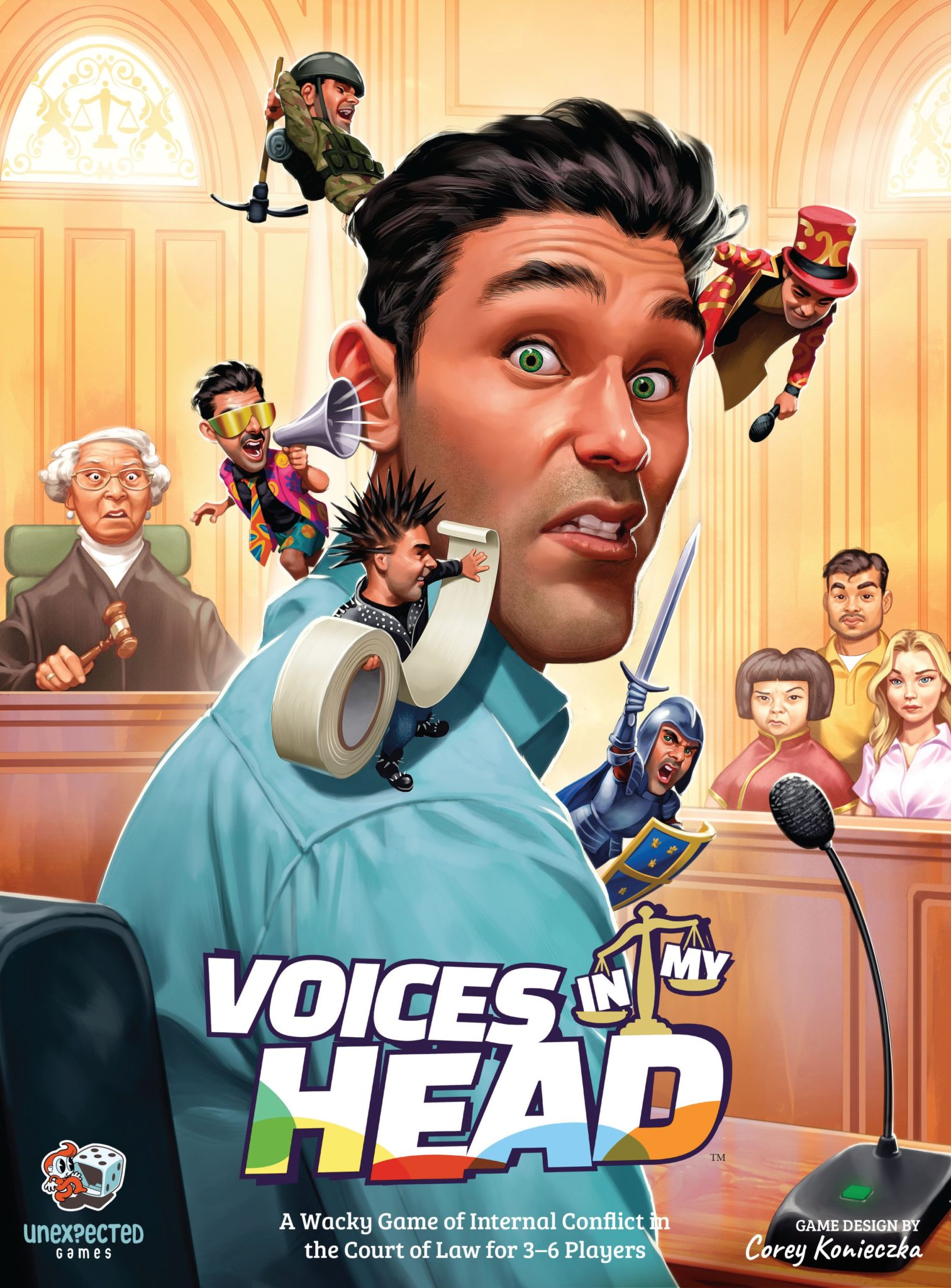
How’s it Play?
So Guy Johnson is on trial because he robbed a bank, (he probably shouldn’t have, but here we are). Each player has a role in this trial, one player has the role of the prosecutor who is trying to convict Guy and send him to prison. All other players take on personas or aspects of Guy’s personality who are trying to fulfill the goal listed on their role card at the end of the game. So really, there can be multiple winner and losers in this game.
There are 8 rounds in the game, and at the beginning of each round the prosecutor chooses a trial card to play. This card shows what region of Guy’s brain will decide some factors for that round. Players deploy control markers to any region of Guy’s brain, either the ones that will be affect this round or possibly other regions that might be tested later.
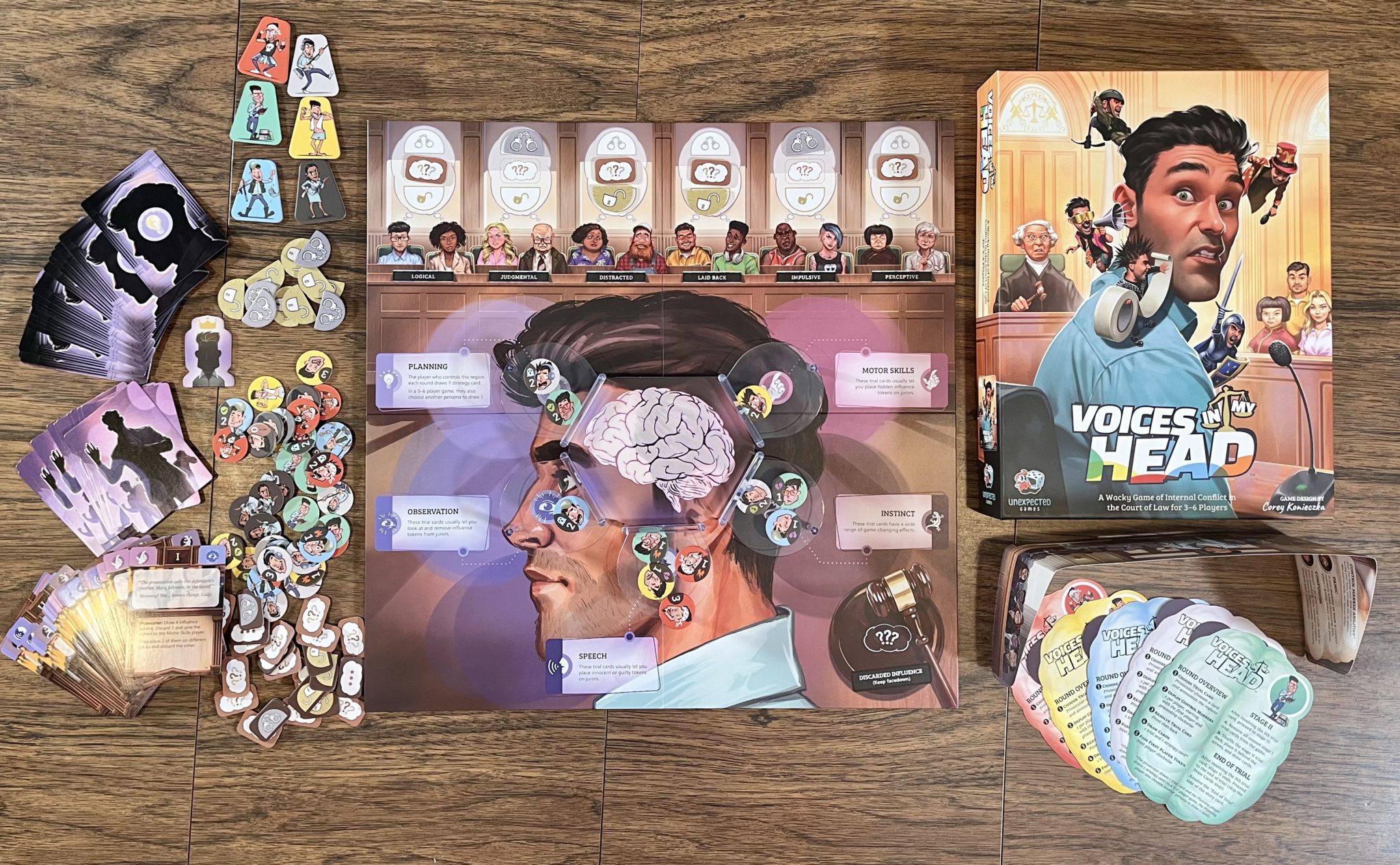
When deploying these tokens, players place their token on the main platform and use their deployment sticks to slide their token in a slot to cause the token to be placed on a plastic region. When multiple tokens are slide to that region, past deployed tokens can fall off as there is only enough room for a certain number of tokens to be on that region.
Players are trying to “win” these regions by having the highest number shown on their control markers so they can fulfill their goal.
The player with the highest value of control markers in a region makes all decisions on corresponding trial card abilities. Some of these effects allow players to sway jurors out on the board by placing out innocent or guilty token on them.
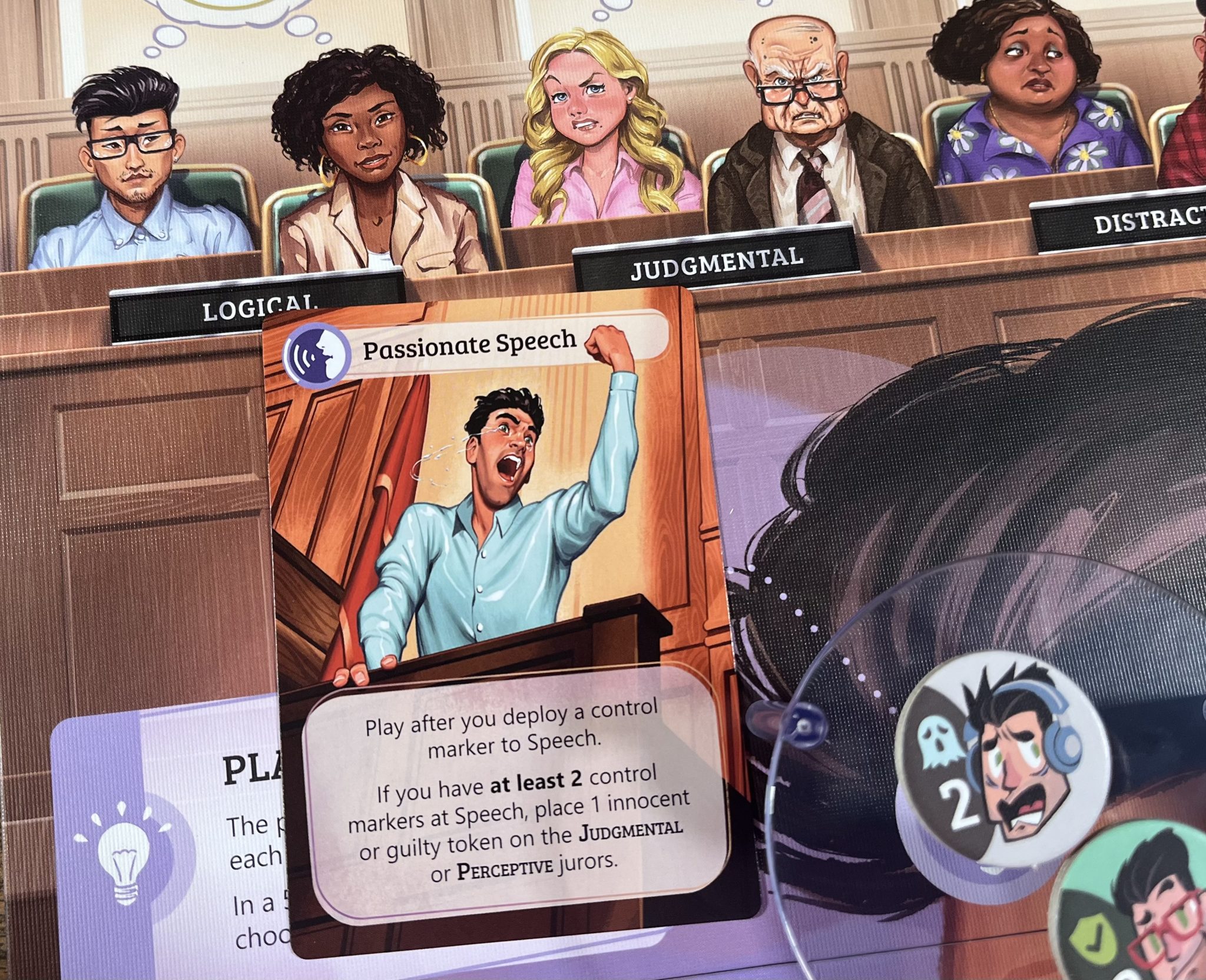
The first 4 rounds focus on the prosecutor presenting evidence and calling witnesses which normally try to pass out guilty tokens. The last 4 rounds tell the story of what happens when Guy himself takes the witness stand.
Each player minus the prosecutor has strategy cards that range with different abilities that can help whoever has that card. Additional strategy cards are given each round to the player with controls the planning region.
After 8 rounds, the prosecutor flips the story card to the “end of trail” side and reads it around. All players flip over their role cards face and then the jury deliberates by flipping over all influence tokens placed on the jurors. For each pair of guilt and innocent tokens on each juror, they cancel each other out and are discarded. At this point whatever tokens are left on each juror is their vote to find Guy innocent, guilty, or undecided. All role cards are then checked to see who fulfilled their goal and those players win, while all other players who didn’t fulfill their goal lose including the prosecutor who is working on a guilty ruling.
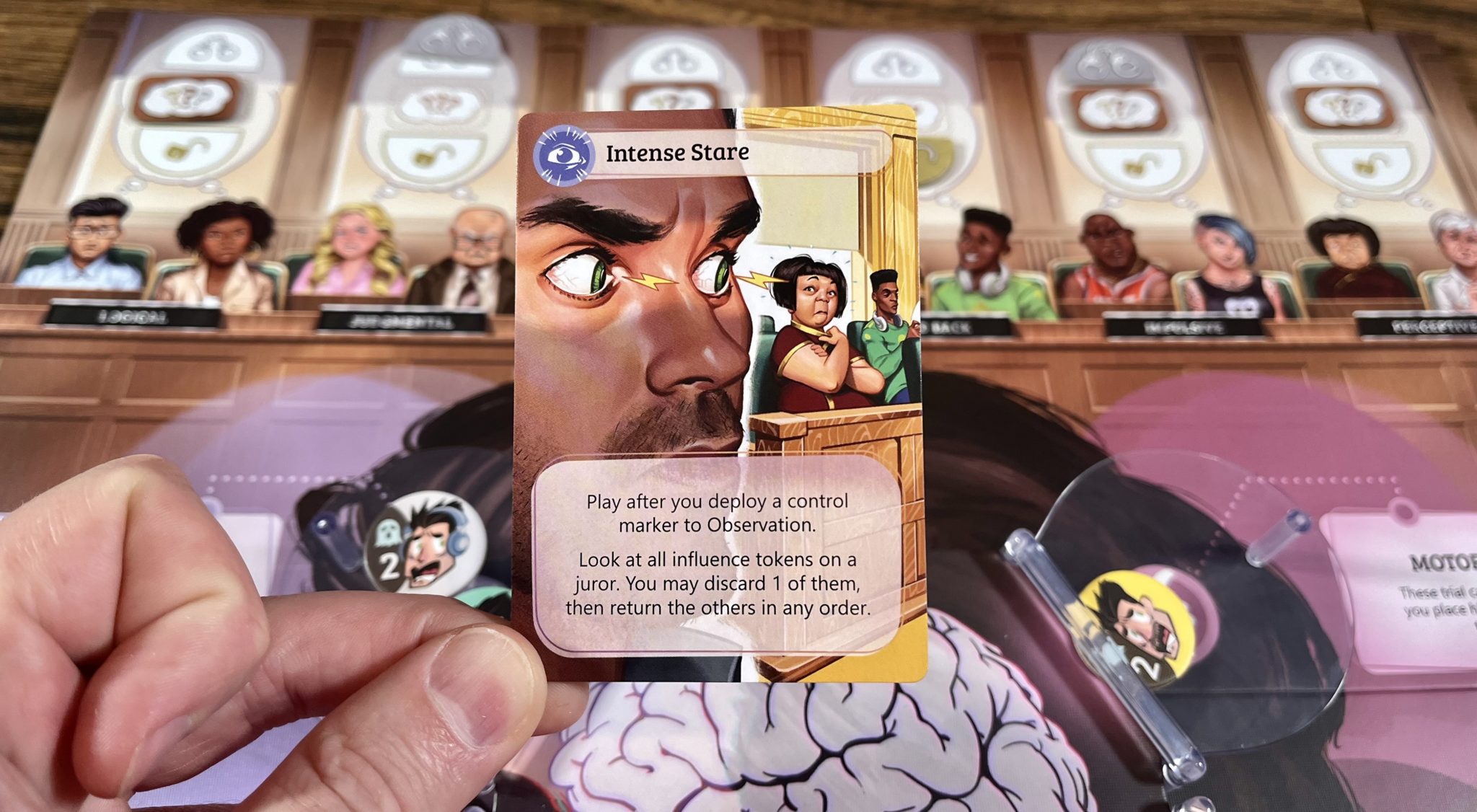
The Verdict
What I most like about this game and for all of the games coming out of Unexpected Games is that they produce surprises. What I mean by that is that you never really know what the game is going to be like because they are unique and they push the limit of making a game that is totally different from anything out on the market.
Voices In My Head does this by first making it a semi dexterity game of situating your tokens strategically on platforms, or by strategically using them to push others off a platform. The game reminds me of a social deduction game, but they changes it a bit to make it so anyone can win or lose independent on any other player. So players are trying to individually do things to manipulate the game without needing to depend on another player to do well to win.
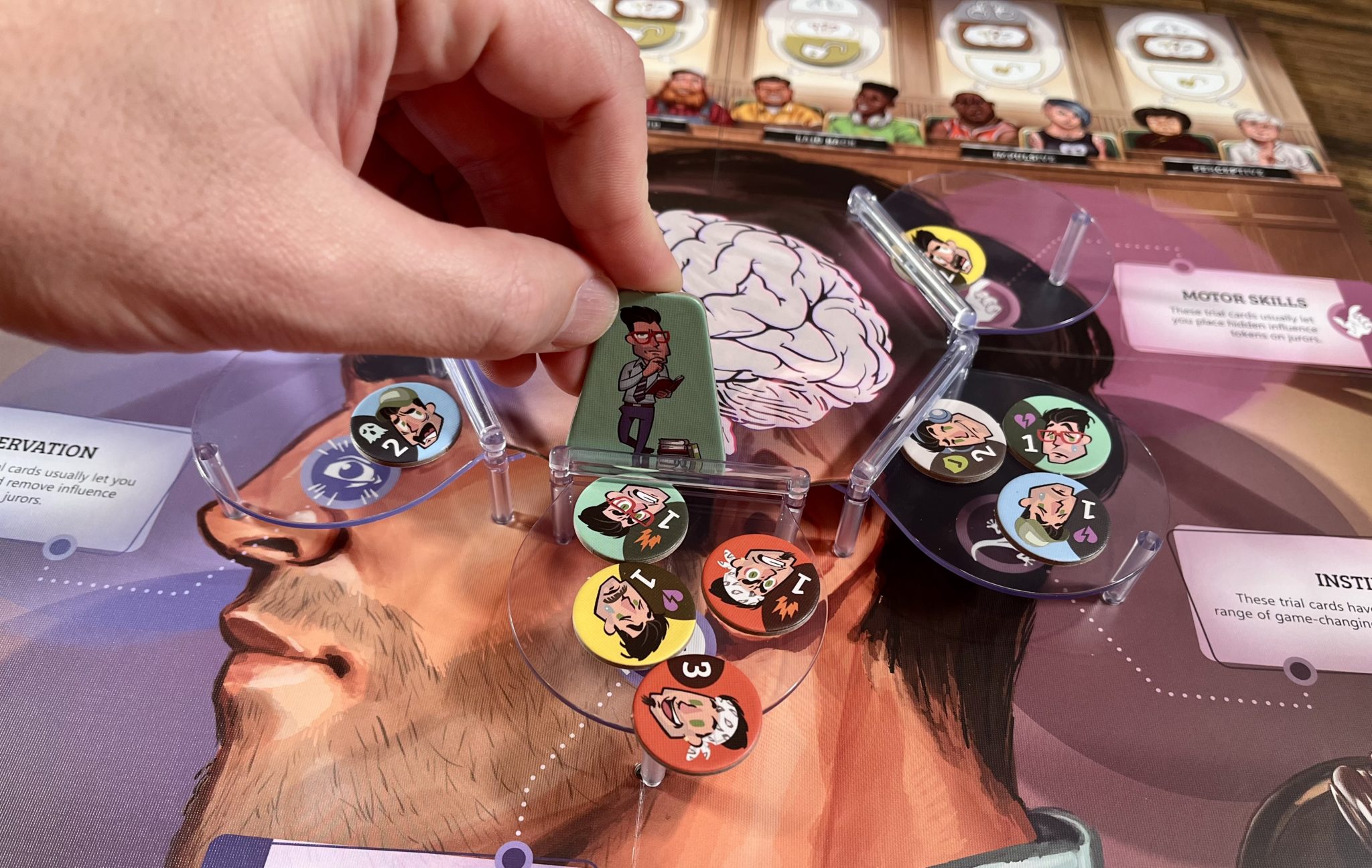
Players also feel independent not only because their goals are all different, but also the fact they have their own strategy cards that can be used to change the game to their favor. This just gives each player something in addition to the normal game and makes you feel like it gets you closer to your goal. When all players use them, it makes the game more exciting as things are changing and your brain has to processes more and plan more.
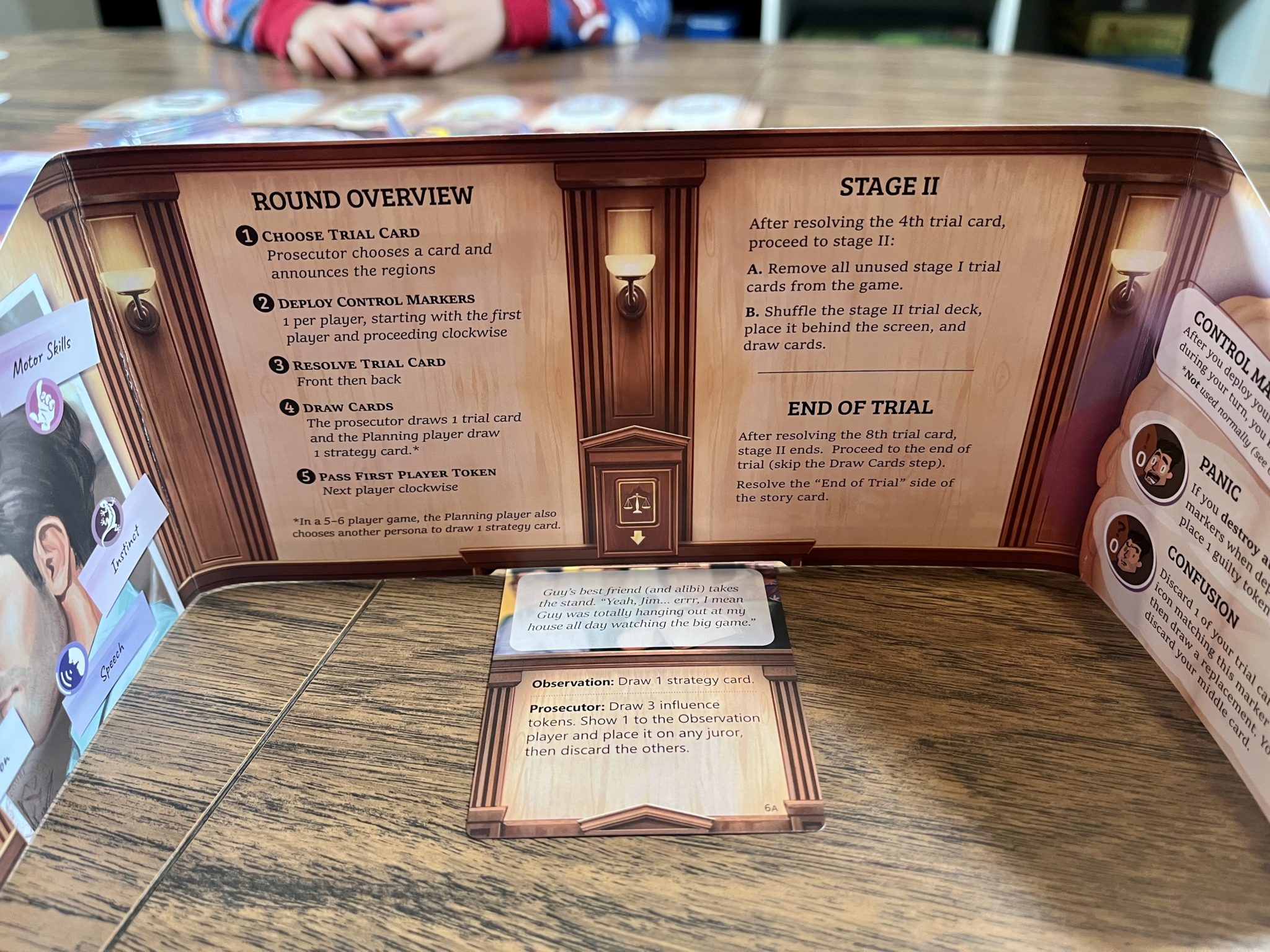
The game does better with more players playing the game. With a lower player count, the area control mechanic isn’t as exciting as when there are more players. The game provides something different from any other game out there. The game provides ways to changes your goals and what you’re trying to do in the game, but ultimately you are doing similar things each time you play. The player count is another way that changes how to game plays and can actually make it feel more re-playable.
You can pick up a copy of Voices In My Head from Amazon or your FLGS!
Images courtesy of Unexpected Games
Have strong thoughts about this piece you need to share? Or maybe there’s something else on your mind you’re wanting to talk about with fellow Fandomentals? Head on over to our Community server to join in the conversation!

